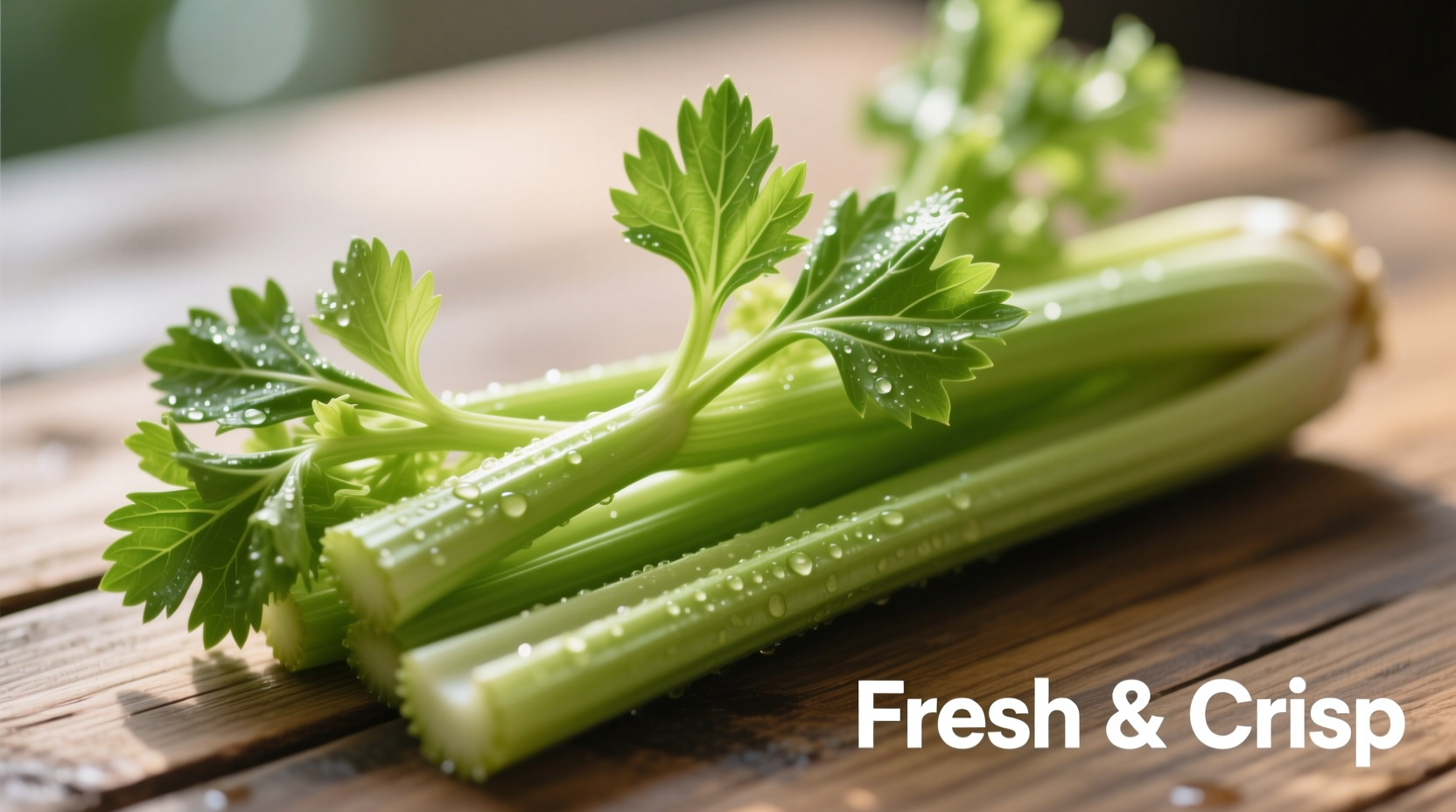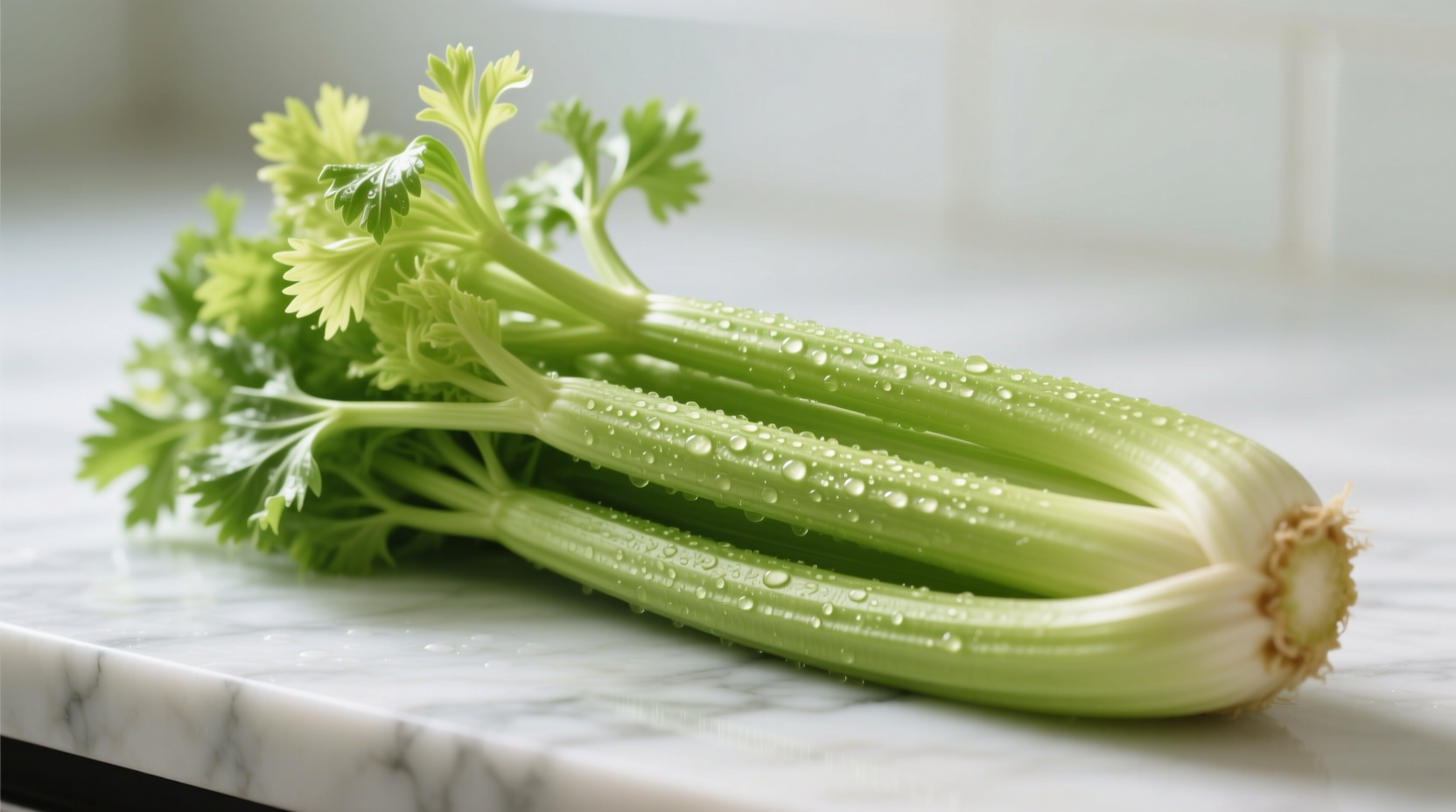Ever reached for celery in a recipe only to wonder exactly what part you're using? You're not alone. Many home cooks mistakenly call celery "ribs" when the correct culinary term is "stalks"—and understanding this distinction unlocks better cooking results. Let's clear up the confusion once and for all.
Understanding Celery Anatomy: Beyond the Terminology Confusion
Botanically speaking, what we commonly call "celery stalks" are actually petioles—the structural supports that connect celery leaves to the plant's central stem. The entire cluster you buy at the store is a single plant's leaf structure, harvested before flowering.

The terminology confusion stems from historical usage. In 19th century cookbooks, celery was often described as having "ribs," but modern culinary standards (per the American Culinary Federation) consistently use "stalks" for the individual petioles and "bunch" for the complete cluster.
| Common Term | Botanical Reality | Culinary Usage |
|---|---|---|
| Celery "ribs" | Not technically accurate | Outdated terminology |
| Celery stalks | Petioles (leaf stems) | Correct culinary term |
| Celery root | Apium graveolens var. rapaceum | Different plant variety (celeriac) |
Selecting Premium Celery Stalks: What Chefs Look For
Professional kitchens judge celery quality by three key factors:
- Vibrant color - Deep green leaves indicate freshness and higher nutrient content
- Firmness - Stalks should snap crisply when bent, not bend limply
- Moisture retention - No brown spots or dry ends, which indicate age
According to USDA agricultural specialists, peak celery season runs from October through March, when stalks contain up to 25% more vitamin K than off-season produce. When selecting celery, choose bunches with tightly packed stalks—this indicates slower, more flavorful growth.
Nutritional Powerhouse in Every Crunch
Don't underestimate these crunchy sticks. A single medium celery stalk (about 7.5 inches long) provides:
- 6 calories
- 14% of your daily vitamin K needs
- Significant potassium and folate
- Natural sodium (80mg per stalk)
Data from the USDA FoodData Central shows celery stalks contain unique phytonutrients like apigenin and luteolin, which preliminary research suggests may support cardiovascular health. While not a significant protein source, celery's amino acid profile includes all nine essential amino acids in trace amounts.
Culinary Applications: Maximizing Flavor and Texture
Celery stalks perform three essential functions in cooking:
- Flavor foundation - The "holy trinity" of mirepoix (with onions and carrots) forms the base of countless soups and stews
- Texture component - Raw stalks add crucial crunch to salads and slaws
- Flavor carrier - Hollow structure absorbs dressings and marinades exceptionally well
Professional chefs recommend different preparation methods based on desired outcome:
- For soups/stews: Cut into 1/2-inch dice to maximize flavor release
- For salads: Slice thinly on diagonal for elegant presentation
- For crudités: Leave whole and serve with dip to showcase natural shape
Storage Secrets: Keeping Celery Crisp for Weeks
Proper storage dramatically extends celery's shelf life. Food safety experts at the FDA recommend these methods:
- Refrigerator method: Wrap stalks tightly in aluminum foil (not plastic) to maintain crispness for 3-4 weeks
- Water method: Store cut stalks upright in a glass of water (change water every 3 days) for maximum crunch
- Freezing method: Blanch stalks for 2 minutes before freezing to preserve texture for cooked dishes
Never store celery near ethylene-producing fruits like apples or bananas, as this accelerates spoilage. If your celery has gone limp, revive it by soaking in ice water for 30 minutes before use.
Creative Ways to Use Every Part
Reduce food waste by utilizing the entire celery plant:
- Outer stalks: Best for cooking (more fibrous but packed with flavor)
- Inner stalks: Ideal for raw applications (tender and less stringy)
- Leaves: Chop finely for garnishes or blend into pesto (higher nutrient density than stalks)
- Root ends: Freeze for vegetable stock
When a recipe calls for "one stalk of celery," it typically means one individual petiole (about 7-8 inches long), not the entire bunch. Understanding this measurement prevents recipe disasters!











 浙公网安备
33010002000092号
浙公网安备
33010002000092号 浙B2-20120091-4
浙B2-20120091-4